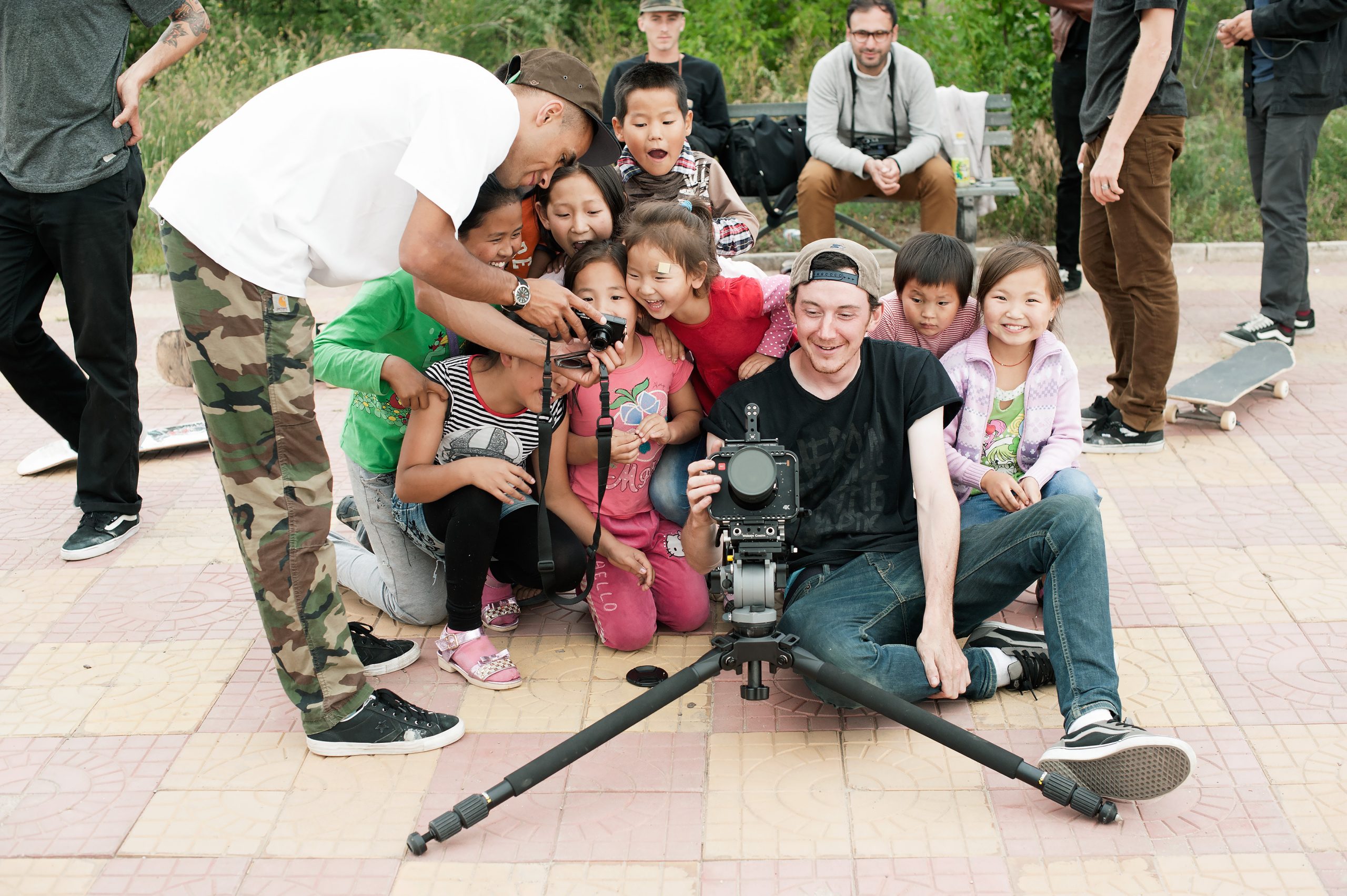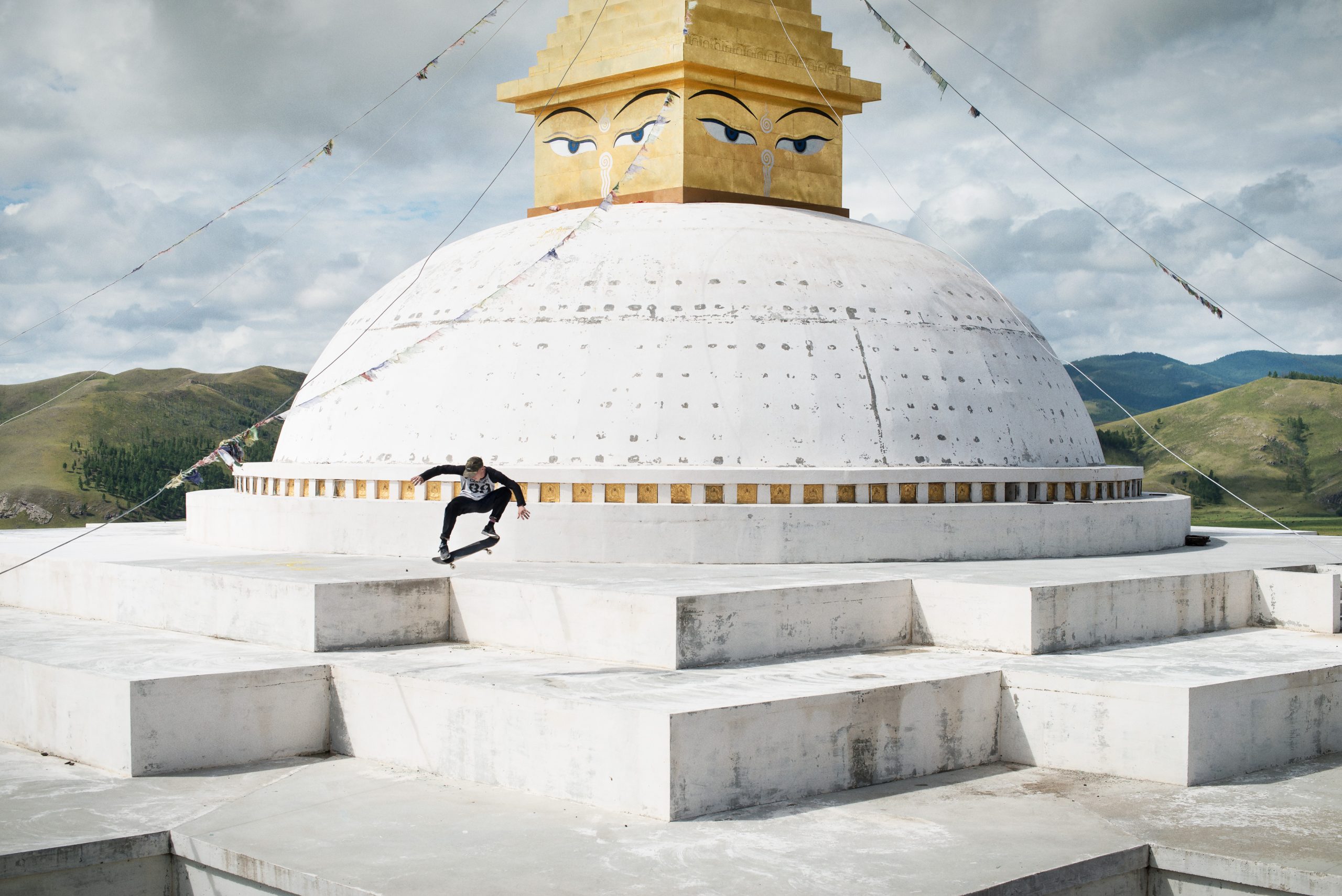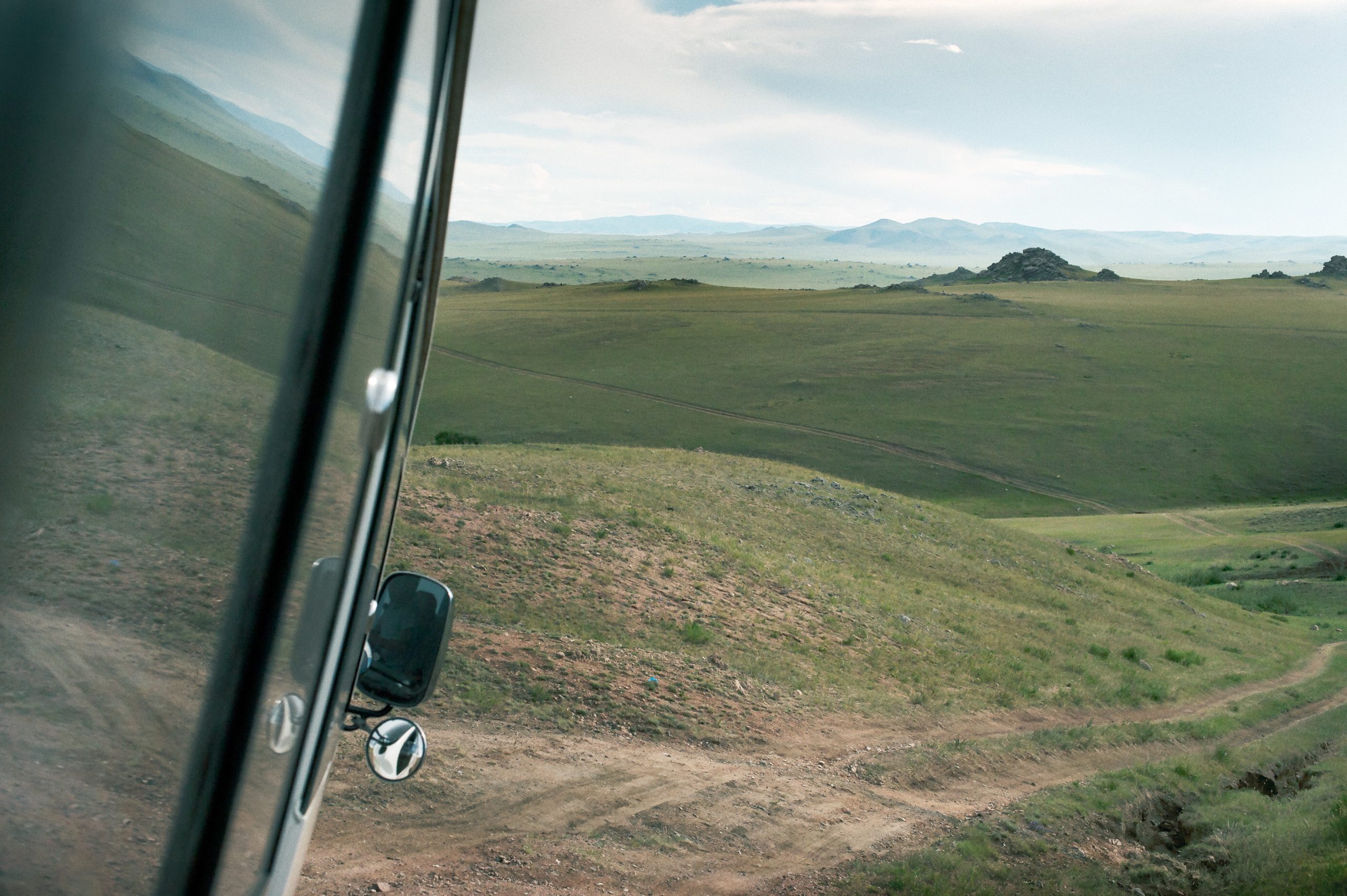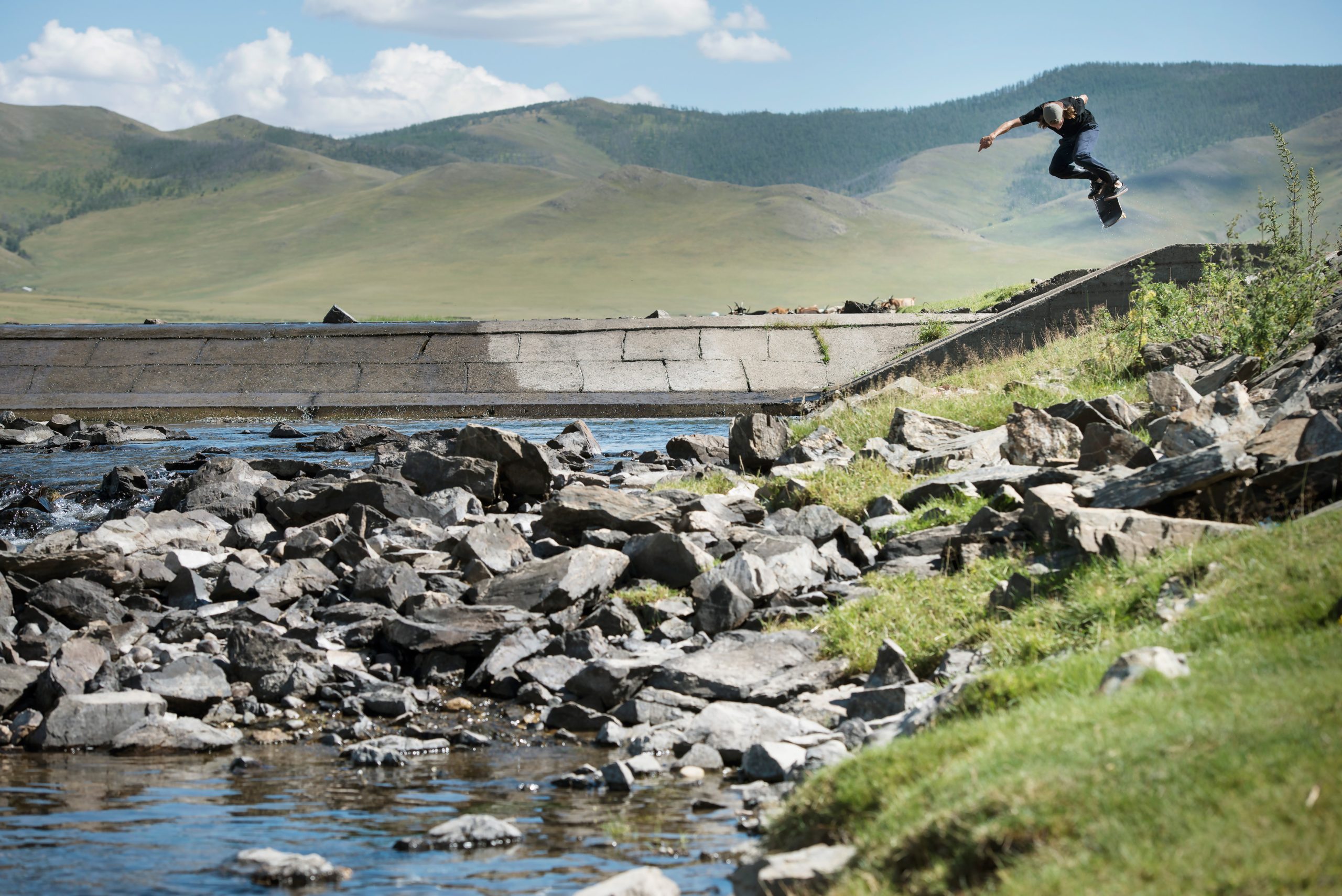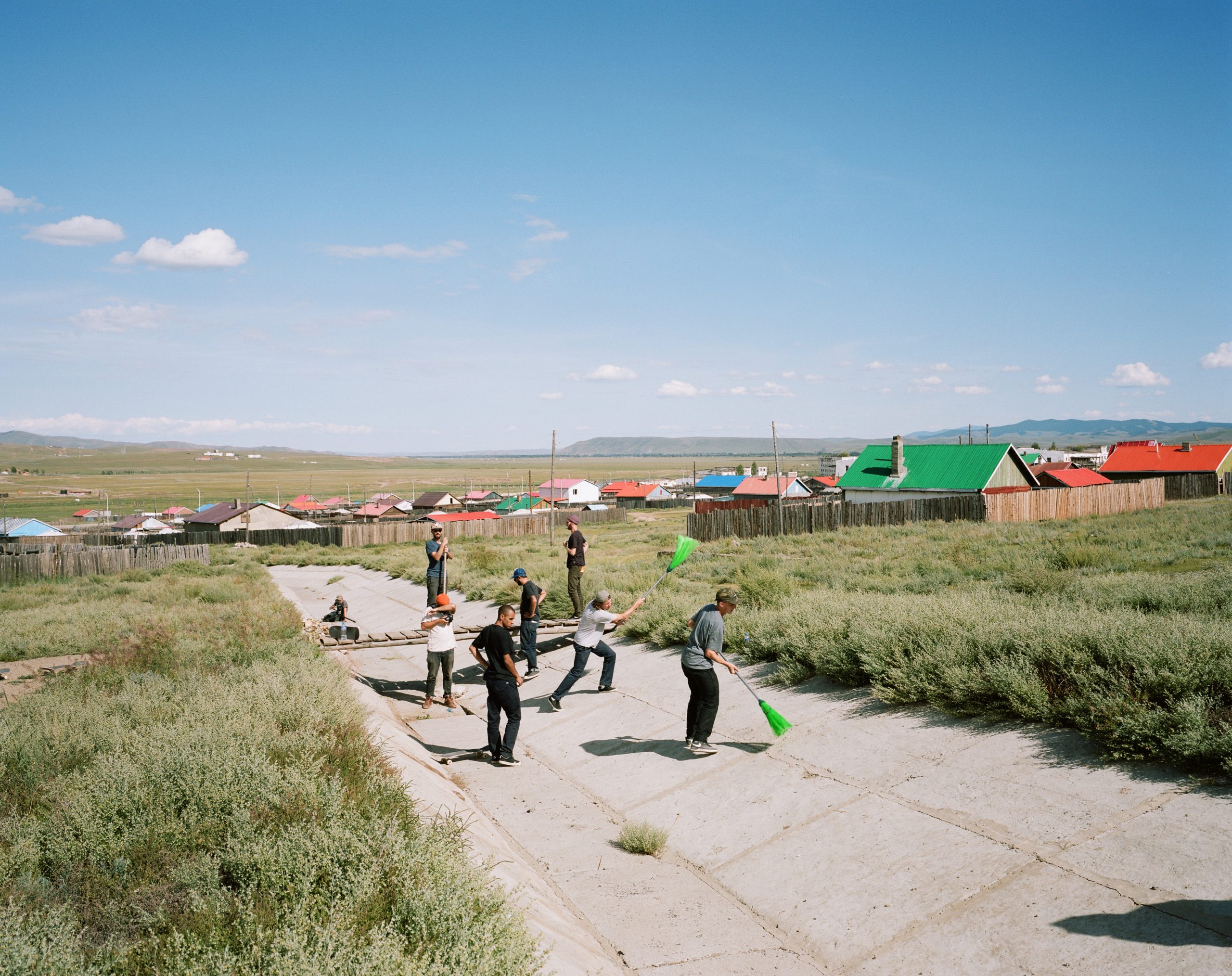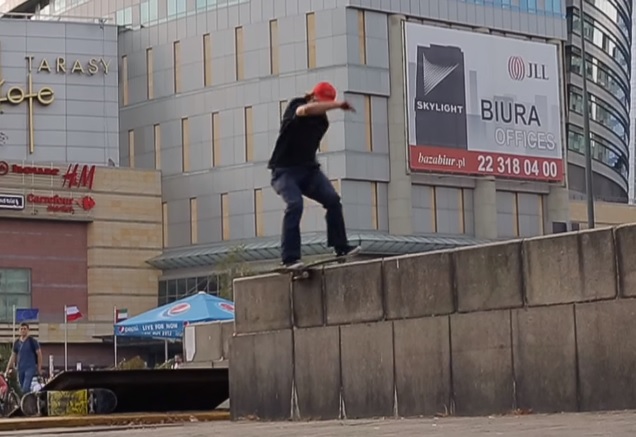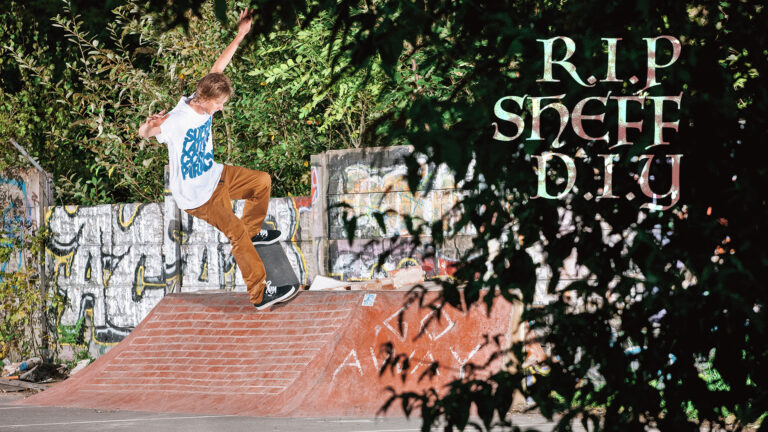Recently a Friday night at the House of Vans played host to the UK premiere of Carhartt’s ‘Out of Steppe’ video, taken from a 2014 Mongolia trip which saw Carhartt heading to the country with photographers, filmers and skaters there to check out how things had changed since a previous Carhartt trip in 2004. We caught up with photographer Percy Dean and team rider Jerome Campbell to discuss the project, the country, fermented horse milk drinks and briefcase-wielding locals. Unfortunately HOV’s combination of high tunnels, over-excitable/drunk skateboarders and DJ’s made for an unforgiving ambient noise backing track, so swathes of the conversation have been lost to the dictaphone ether. Here’s the conversation that survived, along with some of Percy’s and Cyrille Weiner’s evocative photos taken from the book (available from Carhartt.)
All photos by Percy Dean except where stated

High pop, treacherous landing for Jerome.

